|
It is a kind of picture enjoying popularity among the people with a large variety. A few of them are singled out for appreciation, but most of them are used for different worldly life and protocols, such as the portrait of the Gate God, the portrait of gods, illustration, pictures for packaging and decorating, window flowers, lamp pictures, kites, paper cards, colourful squares, flags, embroidery patterns. Of these pictures some are printed in a single colour (black), some others are printed in chromatography or by the continuation of colour applying. It is a characteristic way of picture popularization from the invention of China's woodblock printing to the contemporary printing skill. Their authors are professional painter and engravers. Some of them are anonymously created by farmers.
It is spread in the south of the Changjiang River, and originated from Suzhou, Jiangsu Province. In the middle of the Qing Dynasty, there appeared a great number of workshops which printed and sold New Year pictures.
It enjoys popularity in the south of Jiangsu Province. Its sources of themes are from Wu Song Killing the Tiger, the Legend of the White Snake, the Tale of the West Boudoir, etc. It is printed in plate but coloured manually.
It is spread in the north of China, and named after the village where it is produced. It originated in the Chongzhen Period of the Ming Dynasty, and flourished in the Yongzheng Period and the Qianlong Period of the Qing Dynasty. It inherits the traditional printing craft: it is coloured after the image appears on the link lines. The characters' countenances and attires are painted in lead powder in golden colour. Its sources of themes are from the Three Beauties, the Theft of the Charmed Herb, etc.
It originated in Wei County, Shandong Province. This type of folk woodblock picture is produced in the workshops situated in Yangjiabu and Longchang. It flourished at the beginning of the Qianlong Period of the Qing Dynasty. Influenced by Yangliuqing New Year picture at the outset, it had a distinctive style later. Its thematic sources are from the Males' Ten Businesses, the Females' Ten Businesses, Lord Bao's Taking Office, Kongming's Town-Emptying Plot, etc.
It enjoys popularity in the south of Shanxi Province and is produced in Linfen, Shanxi Province. Linfen prefecture was once called "Pingyang", where engraving print and calligraphy workshops were in boom. At the beginning of this century, two pieces of Pingyang woodblock picture were discovered. They are the most treasurable samples of Pingyang woodblock picture.
It is a type of woodblock New Year picture enjoying popularity in the north of China and is produced in Wuqiang County, Hebei Province. There were more than 140 picture stores in the north of Wuqiang Town at the beginning of this century.Besides, there were more than a thousand New Year picture workshops in its neighbouring villages. The products of this type vary from gate picture, window picture, calendar picture to horizontal scroll, couplet, and screen. The thematic sources are mainly from theatrical stories, local customs, symbols of celebration and wedding, babies and beauties, flowers and landscapes.
It is a type of folk woodblock picture in the southeast of China and produced in Mianzhu County, Sichuan Province. It originated at the end of the Ming Dynasty and the beginning of the Qing Dynasty, and flourished in the Guangxu Period of the Qing Dynasty. In the process of making it, people print ink line with woodblock and paint it in various colours.
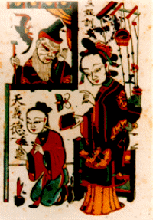
It is popular in the middle of China and named after Zhuxian Town , near Kaifeng, Henan Province. It originated in the Song Dynasty, flourished in the Ming and Qing Dynasties. There used to be more than 300 picture workshops. But they were reduced to no more than 70 at the end of the Qing Dynasty. The themes vary from portraits of martial and intellectual gods to portraits of spirits. The themes are classified into three categories: 1. Exorcising ghosts and conferring blessing; 2. Propitious gods and customs; 3. Theatrical and historical legends.
|
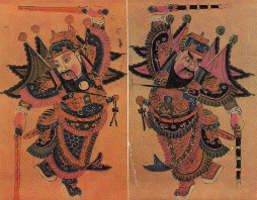 |
[错误报告] [推荐] [收藏] [打印] [关闭] [返回顶部]

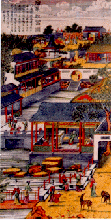
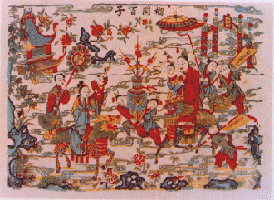
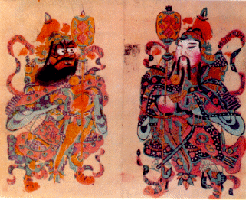
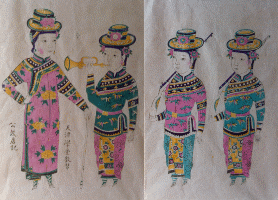
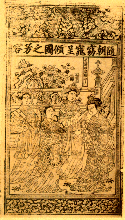
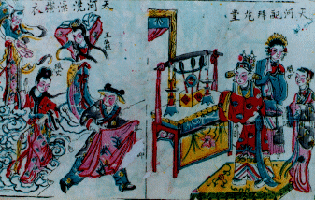
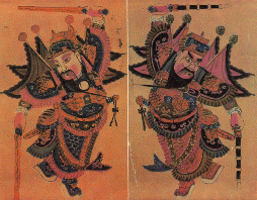
 已有
已有













